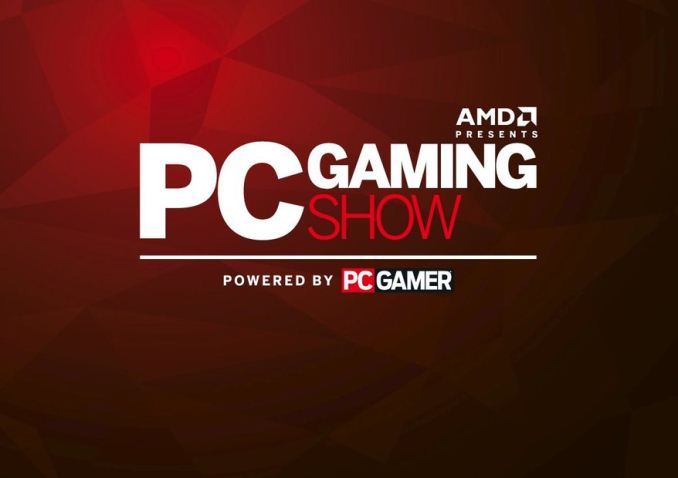AMD Shows Off Dual-GPU Fiji Card At PC Gaming Show
by Ryan Smith on June 17, 2015 8:00 AM EST
Briefly announced and discussed during AMD’s 2015 GPU product presentation yesterday morning was AMD’s forthcoming dual Fiji video card. The near-obligatory counterpart to the just-announced Radeon R9 Fury X, the unnamed dual-GPU card will be taking things one step further with a pair of Fiji GPUs on a single card.
Meanwhile as part of yesterday evening’s AMD-sponsored PC Gaming Show, CEO Dr. Lisa Su took the stage for a few minutes to show off AMD’s recently announced Fury products. And at the end this included the first public showcase of the still in development dual-GPU card.
There’s not too much to say right now since we don’t know its specifications, but of course for the moment AMD is focusing on size. With 4GB of VRAM for each GPU on-package via HBM technology, AMD has been able to design a dual-GPU card that’s shorter and simpler than their previous dual-GPU cards like the R9 295X2 and HD 7990, saving space that would have otherwise been occupied by GDDR5 memory modules and the associated VRMs.
Meanwhile on the card we can see that it uses a PLX 8747 to provide PCIe switching between the two GPUs and the shared PCIe bus. And on the power delivery side the card uses a pair of 8-pin PCIe power sockets. At this time no further details are being released, so we’ll have to see what AMD is up to later on once they’re ready to reveal more about the video card.











133 Comments
View All Comments
obsidian24776 - Wednesday, June 17, 2015 - link
1x fury x was rated as 275w with 500w aio lcswiak - Wednesday, June 17, 2015 - link
you forgot the HBM saves power part too :PGigaplex - Wednesday, June 17, 2015 - link
And yet the Fury X still is a 300W card.testbug00 - Wednesday, June 17, 2015 - link
it's 275 watts average board power. I'm guessing it and the Titan X will be about the same performance once you give the Titan X the 110% power rating. The 980ti a few percent behind both at the 110% setting.AIB cards, everything's up in the air.
dragonsqrrl - Saturday, June 20, 2015 - link
No, it's a 275W TDP, and based on the real world power consumption of the 390X, I wouldn't be surprised if it's avg power consumption at load also exceeds that by quite a bit.lilmoe - Wednesday, June 17, 2015 - link
"Mid-range" HBM interposer chips and SoCs is where its at IMHO, not really interested in niche "high-end"...I'll pass until I see a Zen APU with HBM (integrated 8-16GB DDR4), should be interesting to see the benefits of both power consumption and performance, and space area savings of course.
DanNeely - Wednesday, June 17, 2015 - link
HBM isn't well suited as a replacement for DDR3/4 on the CPU. It's optimized for throughput (since in 3d rendering the GPU is mostly doing sequential reads of data from ram) not latency which matters for the more random IO of a general purpose CPU.If they can get costs down enough a 1GB HBM stack might work as on package VRam to help free the APUs bandwidth bottleneck problems. Replacing the DDR dimms used by the CPU for main memory will probably end up falling to a competing next generation memory system that's better suited for the CPUs needs.
tcube - Thursday, June 18, 2015 - link
AFAIK HBM has much better latency then GDDR5 and quite possibly in the range of the DDR3-DDR4. HBM 2 could improve on that even more. HBM is most definitely good for at least normal PCs, it should make a great APU memory, especially so on laptops. Imagine a quad core zen with 1000SP's and 16GB of HBM in a 20-25W package using on 14nm FF process? That thing would be absolutely insane! Much more power then an average user would need on a day to day basis. And could run any game in hd(max settings)-fhd(high settings), should be able to even run some VR.geekfool - Friday, June 19, 2015 - link
"HBM isn't well suited as a replacement for DDR3/4 on the CPU."that's what WideIO2 is for....
Lolimaster - Thursday, June 18, 2015 - link
The APU only needs 2GB of HBM memory, then you can go cheapo 2133 DDR4 memory for the system.